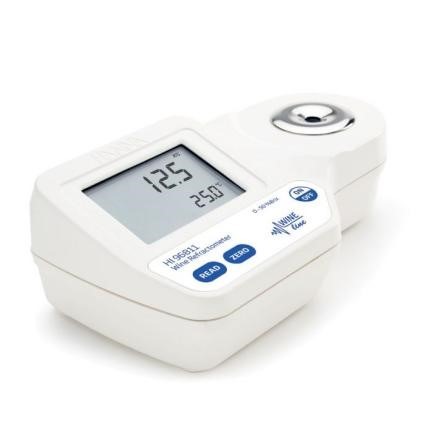Refractometers for chemical testing are optical instruments used to measure the refractive index (RI) or the concentration of a solute in a solution. They are commonly employed in various scientific, industrial, and research applications, particularly in the fields of chemistry, food and beverage, pharmaceuticals, and biology. Here’s an overview of refractometers:


Working Principle
Refractometers operate based on the principle of Snell’s law, which describes the relationship between the angles of incidence and refraction when light passes through different media.
A typical refractometer consists of the following components:
- Prism or Sample Well: The sample is placed on a transparent surface, often a prism or a well.
- Light Source: A light source, typically an LED or a lamp, directs light into the sample.
- Prism Surface: The light passing through the sample interacts with the sample’s refractive index.
- Detector: Measures the angle at which the light exits the sample.
- Scale or Digital Display: The instrument’s scale or digital display provides the refractive index or concentration reading.
Components
- Refractive Index Measurement: Refractometers determine the refractive index of a sample, which is related to the speed of light in the sample medium. This property can be used to identify and characterize substances.
- Concentration Measurement: Refractometers can also be used to measure the concentration of a solute in a solution, particularly in solutions where the refractive index changes with solute concentration.
- Simple and Rapid: These instruments provide quick and straightforward measurements, making them suitable for routine analysis.
- Non-Destructive: Refractometry is a non-destructive technique, allowing samples to be measured without alteration.
Types Of Refractometers
- Analog Refractometers: These chemical testing instruments have a scale that is read visually to determine the refractive index or concentration.
- Digital Refractometers: These instruments provide a digital readout of the refractive index or concentration, offering increased accuracy and precision.
- Abbe Refractometers: More advanced instruments that allow for measurements at various wavelengths of light and provide additional features for temperature control and correction.
Applications
- Chemical Analysis: Identification and characterization of chemical substances based on their refractive index.
- Quality Control: Determination of the concentration of solutes in solutions, including sugar content in food and beverages.
- Pharmaceuticals: Monitoring and quality control of pharmaceutical formulations.
- Petroleum Industry: Analysis of the refractive index of crude oil and petroleum products.
- Biological and Clinical Research: Determination of protein concentrations, serum analysis, and cell culture applications.
- Gemology: Identification of gemstones based on their refractive properties.
Maintenance
- Regular calibration using standard reference materials to ensure measurement accuracy.
- Cleaning and maintenance of the prism or sample well and optical components.
- Proper storage and handling to prevent damage to the instrument.